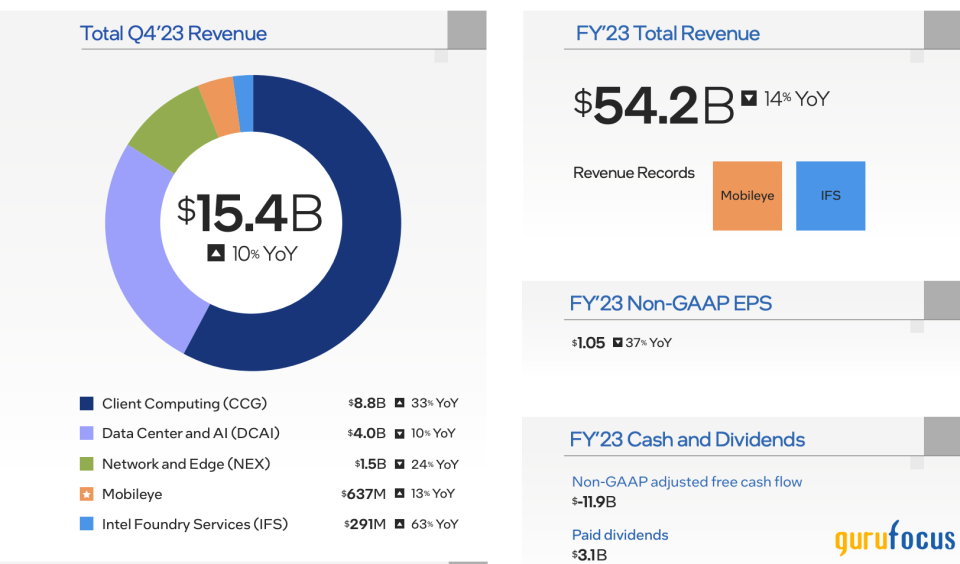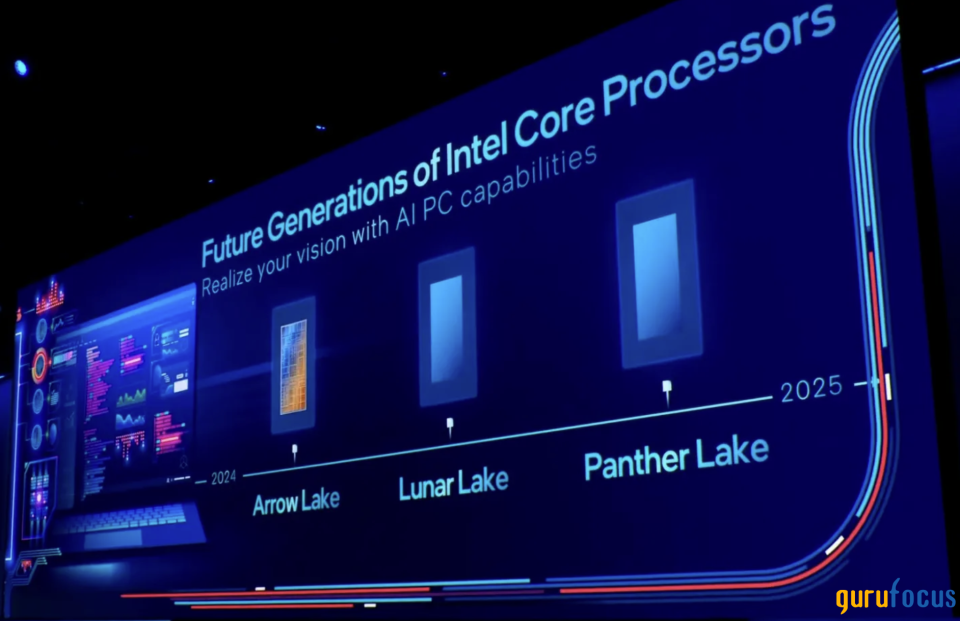Intel: The IDM 2.0 Transformation
Intel Corp.'s (NASDAQ:INTC) IDM 2.0 strategy, led by CEO Pat Gelsinger, marks a pivotal shift in semiconductor manufacturing, aiming to outpace its rivals.
This bold initiative focuses on innovation and core engineering, positioning the company to reclaim industry leadership and drive technological advancements, with ambitions for a dominant market presence by 2030.
Amidst a competitive landscape, Intel's strategic recalibration and financial resilience spotlight a reinvigorated commitment to shaping the future of semiconductors.
IDM 2.0 plan: A strategic leap to transform semiconductor manufacturing
Since returning to the company in 2021, Gelsinger has sought to reinvigorate Intel's growth prospects with a new master plan that focuses on core engineering as it looks to take on industry heaters from Taiwan Semiconductor Manufacturing (NYSE:TSM), Samsung (SSDIF), and Nvidia (NASDAQ:NVDA).
Gelsinger has already rebranded the company's foundry business and is focused on manufacturing chips for other companies. Intel Foundry has come up with an astounding new approachIntegrated Device Manufacturing 2.0 (IDM 2.0)that is a surging promise and has the power to transform the spectrum of semiconductor manufacturing, reaffirming its iconic status in the area of foundry business.
With the new strategy, Intel aims to become a leading developer of process technology and manufacturer of semiconductors. The new master plan focuses on developing chips that are as efficient and capable as the ones developed by industry leaders.
Thus, Intel aims to surpass Taiwan Semiconductor and become the second-largest foundry producer by 2030. Thus, the effective execution of its IDM 2.0 strategy is crucial for maintaining its competitive edge.
$10 billion opportunity and improving financials
With lifetime deals valued at around $10 billion already signed, spanning IFS, Intel's strategic course punctuations have come through partnerships and remarkable technological breakthroughs.
This strategic framework capitalizes on innovative new product concepts and the distinctive "Intel way"characterized by diligence and forward-looking planning. It positions the company to tirelessly pursue fresh avenues for market dominance and technological advancement.
Despite facing challenges, Intel demonstrated remarkable resilience, posting strong performance in the final quarter of 2023. Its fourth-quarter revenue was up 10% to $15.40 billion, coming in at the higher end of its guidance. Similarly, full-year revenue grew 14% year over year to $54.20 billion.
Even though the Data Center and AI (DCAI) business saw a dip, the core server CPU shipment growth indicated stabilizing trends. Moreover, Mobileye's (NASDAQ:MBLY) comprehensive range of products exhibited robust growth trends, with a notable 13% increase year over year. Therefore, this significant growth highlights Mobileye's extensive potential for expansion in the advanced driver assistance systems market.
Finally, for 2024, Intel is projecting revenue of about $72.10 billion, at around 50% for gross margins. Moving toward the first quarter of 2024, the company is projecting revenue to be $12.20 billion to $13.20 billion, with a gross margin of around 44.50%. Hence, these forecasts indicate some strategic flexibility and a proactive approach that Intel has taken to anticipate and address market dynamics.

Source: Intel
Intel's strategic plays in the competitive environment
Intel's new strategic expansions, such as its relationship with Microsoft Corp. (NASDAQ:MSFT) and the increased investments in artificial intelligence, show how determined it is to move back into the front-seat position within the industry.
The company is staring at a $15 billion opportunity to produce custom chips for Microsoft, mostly linked to powering AI solutions.
Further, it has effectively utilized its strengths in execution, scale and innovation as pivotal levers, enabling it to continually reinvent itself.
Additionally, Intel's strategic direction for the future lies in its IDM 2.0 strategy, which includes a comprehensive program to enhance and extend leadership in semiconductor manufacturing. This vision is reinforced by a process technology roadmap that outlines innovation and industry leadership.
Whether through innovative methods, such as making deep investments in advanced semiconductor packaging in New Mexico or inventing new levels of strategic partnerships with the highest industry leaders, Intel leverages all kinds of modalities to serve not only the need that already exists, but is also latent due to the non-availability of enough and adequate technology or solutions.
According to the tech expert Michael Robert, IFS is the foundation of Intel's IDM 2.0 strategy and reflects its commitment to scaling manufacturing and providing solutions to more customers. The successful business wins, and the growing portfolio of IFS represents customers' confidence in Intel's technological leadership and strategic direction. As IFS evolves, it will be the foundation of how it will lead the semiconductor industry.
Intel foundry innovation roadmap
The key milestone for Intel arrived in February at its investor day, when it unveiled a broad process technology. The roadmap solidifies Intel's relentless pursuit of process leadership, backed by Intel 14A, and moves to subsequent nodes such as Intel 4, 20A and 18A.
Additionally, with the investment of $3.50 billion into cutting-edge semiconductor packaging technology in New Mexico, Intel can meet the fast-growing demand for AI-driven chips and complex packaging solutions that make these a reality.
Finally, the Fab 9 and Fab 11x facilities in Rio Rancho mark an essential milestone in Intel's push to mass-produce advanced 3D packaging technology. The advanced technology is the first of its kind, enabling processors to be constructed with vertically stacked tiles.
Consequently, customers can mix and match compute tiles to optimize costs and power efficiency.

Source: Gururd.com
Navigating semiconductor challenges with flexibility and a long-term vision
Intel's journey through the semiconductor landscape is fraught with both challenges and opportunities. The heedful delay in the $20 billion Ohio fabrication plant is just an example of what hurdles lie in the path of innovation.
The chip giant has had to push back construction of the plant until 2026 or 2027 due to business conditions and the demanding environment. Based on flexibility and long-term planning, Intel's strategic response demonstrated a solid capability to change and prove success under adversity.
Concluding thoughts
The IDM 2.0 strategy will be a visionary approach to manufacturing semiconductors, fortified by an intensive course of action on process technologies and strategic drives. Thus, Intel's emphasis on scaling up its manufacturing, driving innovation and having a long-term strategic partnership reflects how well-prepared it is to counter the fragilities associated with the semiconductor market.
As Intel continues to execute its vision, an unwavering focus on innovation and resilience to overcome all challenges through strategic investments in technology and talent will be instrumental in defining the company's role in the next era of semiconductor manufacturing.
This article first appeared on GuruFocus.
